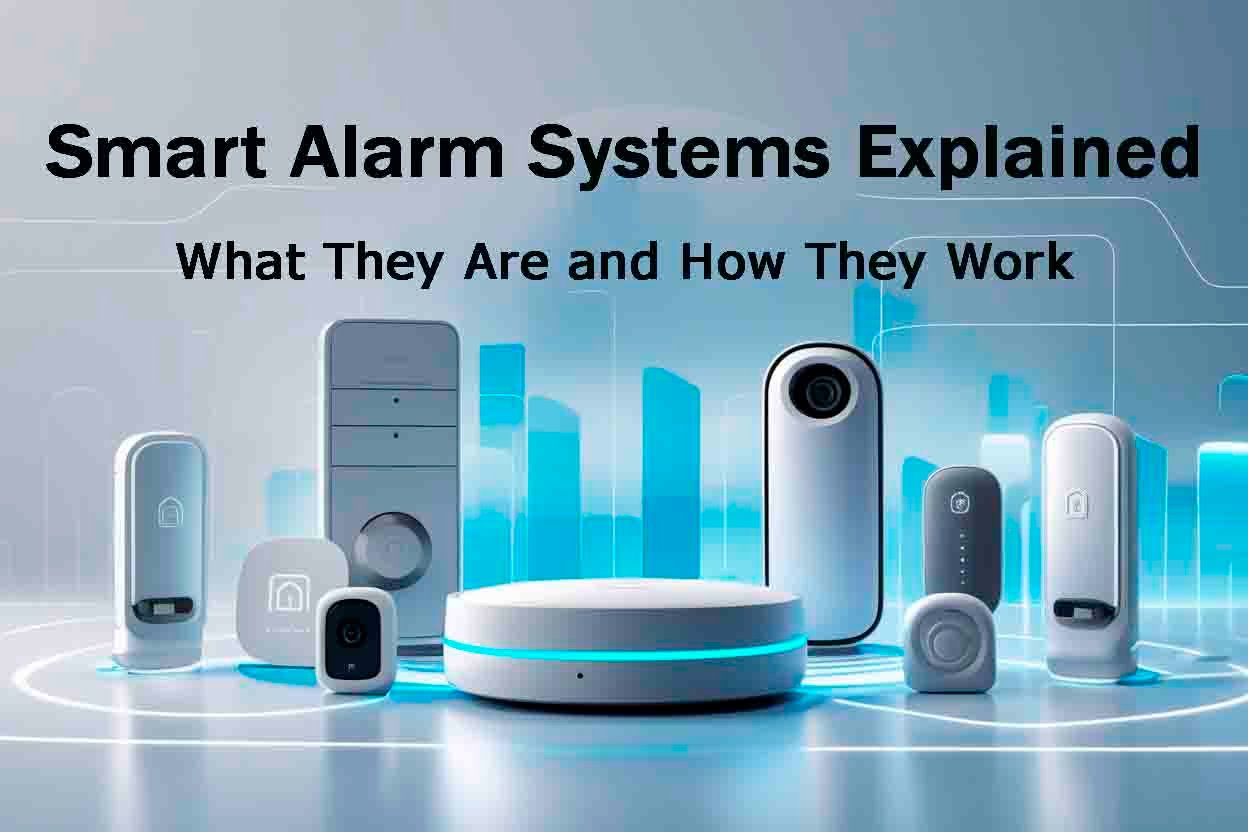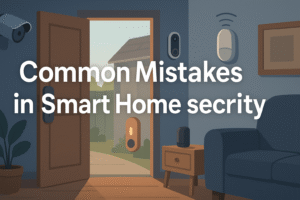Smart alarm systems are changing the way we protect our homes. Unlike traditional alarms that rely on simple sensors and loud sirens, smart alarms offer intelligent protection, remote access, and seamless integration with other smart home devices. In this post, we’ll explore what smart alarm systems are, how they work, and why they’re becoming a must-have for modern homeowners.
What Is a Smart Alarm System?
A smart alarm system is a connected security solution designed to monitor your home using internet-enabled devices. It typically includes motion sensors, door and window contact sensors, smart cameras, and a central hub or control panel. These systems can send alerts to your smartphone, automate responses (like turning on lights), and even integrate with voice assistants like Alexa or Google Assistant.
Key Features of Smart Alarm Systems
Smart alarm systems are packed with powerful features that go beyond basic intrusion detection. Here’s a deeper look at the main features that make them a reliable and intelligent choice for home protection:
1. Remote Monitoring Anytime, Anywhere
One of the biggest advantages of smart alarm systems is the ability to monitor your home remotely using your smartphone, tablet, or even a smartwatch. Whether you’re at work, on vacation, or running errands, you can:
- Check system status
- View live camera feeds
- Receive instant alerts
- Arm or disarm your system with a single tap
This level of control gives you real peace of mind wherever you are.
2. Real-Time Alerts and Smart Notifications
Forget the outdated sirens that only make noise at home. Modern smart alarms notify you the moment something suspicious is detected. Alerts can be sent via:
- Push notifications
- SMS or email
- App notifications with detailed logs
Some systems even allow you to customize alert types depending on the sensor (e.g., motion in the backyard, door opened, window left open), making your responses quicker and more effective.
3. Mobile App Control for Total Convenience
Almost all smart alarm systems come with a companion mobile app. From the app, you can:
- Arm/disarm your alarm system
- Set up schedules or routines
- Monitor battery levels or connectivity status
- Manage multiple zones or areas (e.g., garage, basement, front door)
This centralized control replaces the need for physical keypads and adds a layer of convenience and security.
4. Seamless Integration with Smart Home Devices
Smart alarms don’t work in isolation—they integrate with your entire smart home ecosystem. This enables powerful automations like:
- Turning on smart lights when motion is detected
- Automatically locking doors when the system is armed
- Activating indoor cameras when someone opens the front door
With platforms like Google Home, Alexa, or Apple HomeKit, you can connect your alarm with smart plugs, lights, thermostats, and even sprinkler systems.
5. Voice Assistant Compatibility
Many smart alarm systems support popular voice assistants, allowing you to use simple commands like:
- “Alexa, is the alarm on?”
- “Hey Google, arm the house.”
- “Disarm the system using voice pin.”
This adds hands-free convenience and accessibility, especially helpful for elderly users or those with disabilities.
6. Cloud Storage and Video Recording
For systems that include cameras or video doorbells, cloud storage allows you to:
- Review recorded footage
- Save clips for evidence
- Share video with authorities or neighbors
Some providers offer free limited cloud storage, while others offer subscription plans with longer retention and more features like AI motion detection or facial recognition.
How Do Smart Alarms Work?
Smart alarm systems work by combining sensors, connectivity, and real-time communication to detect potential threats and alert you instantly. Unlike traditional alarms that rely on loud sirens or landline monitoring, smart alarms are internet-connected, allowing for more flexible and intelligent protection. Here’s how the process typically works:
1. Detection Through Smart Sensors
At the heart of every smart alarm system are the sensors. These can include:
- Motion sensors – Detect unexpected movement inside or around your home.
- Door and window sensors – Trigger an alert when a door or window is opened while the system is armed.
- Glass break detectors – Listen for the unique sound pattern of breaking glass.
- Environmental sensors – Monitor smoke, CO2, water leaks, or temperature spikes.
Once a sensor is triggered, the system immediately goes into action.
2. Instant Signal Transmission
When the system detects a potential issue, it sends a signal through your Wi-Fi or cellular network. This signal is securely transmitted to:
- Your smartphone or tablet, via push notification or app alert
- The cloud server of the alarm provider for logging and analysis
- An optional professional monitoring center, if your system includes a subscription service
This happens almost instantly—often in under a second—ensuring rapid awareness of any threat.
3. User Interaction and Control
Once you receive the alert, you can take action through your connected device:
- Check live camera feeds or sensor status
- Confirm whether it’s a false alarm
- Contact emergency services directly from the app
- Remotely disarm or escalate the alarm system
Some systems also allow multiple users (like family members) to respond simultaneously, ensuring no alert is missed.
4. Automation and Smart Response
Smart alarm systems can be programmed to respond automatically to events. For example:
- Lights turn on if motion is detected at night
- Smart locks engage when the system is armed
- Cameras begin recording as soon as a door sensor is tripped
- Voice assistants announce the type and location of the triggered alert
This kind of integration helps deter intruders and adds convenience for homeowners.
5. Monitoring Options
You can choose between:
- Self-monitoring – You handle all alerts yourself through the app.
- Professional monitoring – A 24/7 team monitors the system and contacts emergency services if needed.
Some providers even offer hybrid models, giving you flexibility based on your budget and lifestyle.
Why Choose a Smart Alarm System?
- Enhanced Security: Instant alerts and video monitoring mean faster response times.
- Convenience: Manage your system anywhere, anytime.
- Customization: Add or remove devices easily, based on your home’s needs.
- Cost-Effective: Avoid professional installation or long-term monitoring contracts.
Final Thoughts: A Smarter Way to Secure Your Home
As our homes become increasingly connected, the way we think about security is also evolving. Smart alarm systems are no longer just a luxury—they’re quickly becoming a necessity for homeowners who value both safety and modern convenience.
What makes them stand out isn’t just their high-tech appeal, but their practical everyday benefits. From real-time alerts on your phone to seamless integration with other smart devices, these systems offer unmatched control, flexibility, and peace of mind. Whether you want to monitor your front door, detect unusual motion, or simply automate your home’s response to different scenarios, a smart alarm system gives you the tools to do it—all from your smartphone.
More than just a digital watchdog, a smart alarm becomes the central nervous system of your smart home. It connects with your lights, locks, sensors, and cameras to create a responsive environment that’s always ready to protect you.
And perhaps the most valuable part? Smart alarms grow with your needs. Whether you’re just getting started with home automation or expanding an existing setup, these systems adapt—offering both scalability and long-term savings.
In the end, choosing a smart alarm system isn’t just about technology—it’s about feeling safer, more in control, and more connected to the place you call home.





